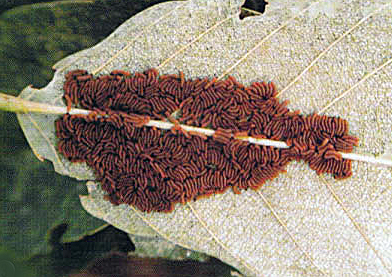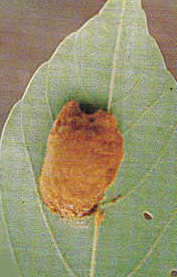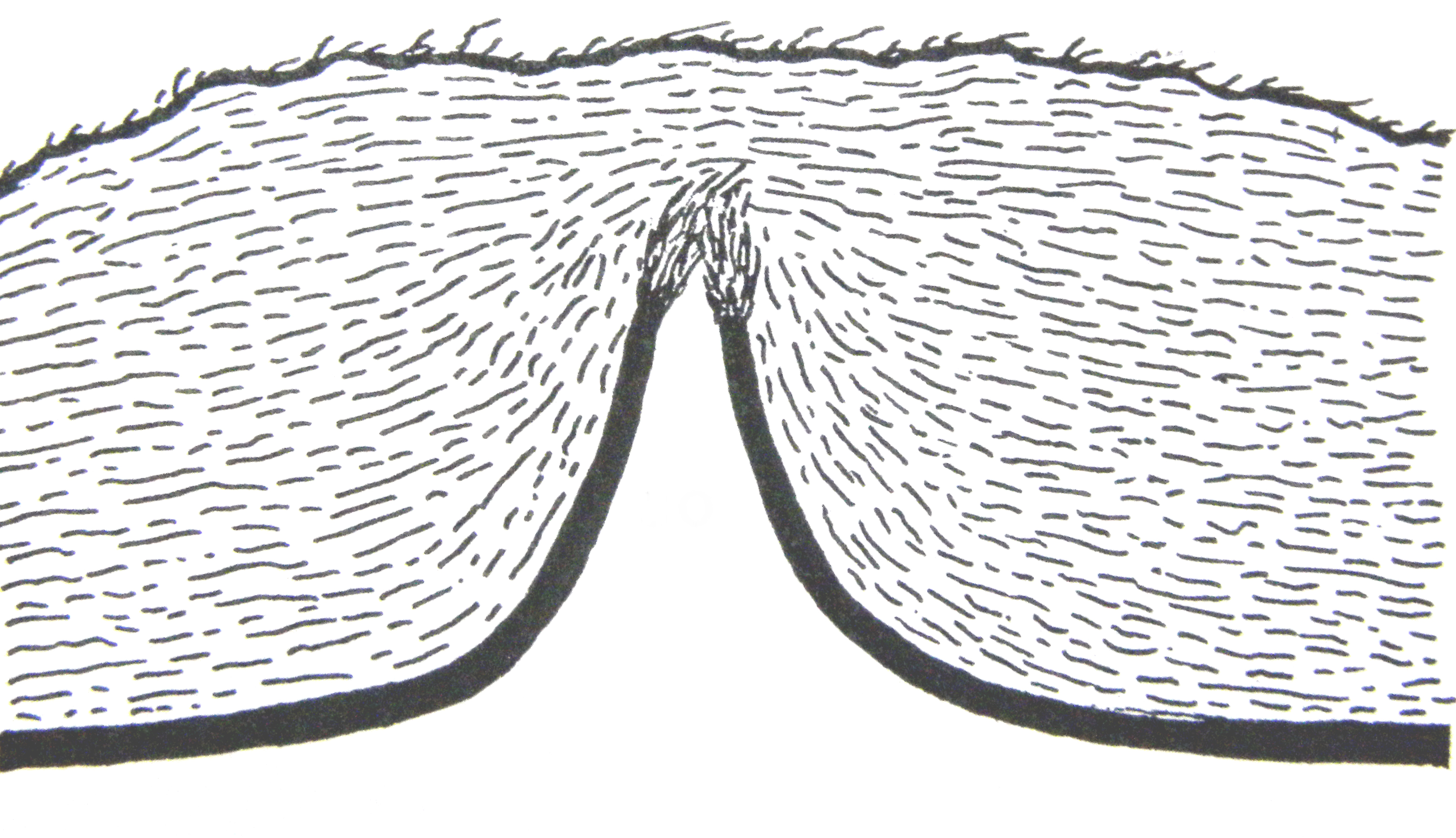African Silkworms: Anaphe (Thaumetopoeinae: Notodontidae)
Prominent among the social caterpillars of African are the so-called African silkworms which include seven species in the genus Anaphe:infracta, carteri, moloneyi, panda, reticula, ambrizia, and vanata. Sibling groups of the caterpillars form nomadic colonies that consist of several hundred individuals. The caterpillars rest in tight clusters when not feeding and move over the branches of the host tree in processions.
The formation and maintenance of processions likely depends of tactile and pheromonal cues, as has been determined for the related pine processionary of Europe, but the behavior has not been studied in Anaphe.
The caterpillars are valued because the cocoon silk of some species, particularly A. infracta, A. venata and A. moloneyi is harvested and used to make sányán cloth. The insect is also collected and eaten. Trees colonized by the caterpillars may be marked to denote ownership.
The caterpillars contain a thiaminase which breaks down vitamin B1 (thiamin). Susceptible individuals may develop a neurological condition known as seasonal ataxia following ingestion of the caterpillars.
Of particular interest, the larvae of A. infracta and A. panda build communal nests when they reach maturity and spin their cocoons inside the structures.
Egg mass and an aggregation of first instar Anaphe caterpillars
Anaphe nest stripped of its outer two layers of silk
The Anaphe nest is the most complex, communally-built structure yet described for a social caterpillar. In addition to its multilayered outer shell, the nest is provisioned with one or more openings (arrows) which allow the moths to escape. These openings are often turret-like as indicated by the three arrows on the right. As shown in the insert, the hard inner layer of the nest is interrupted at these sites facilitating the escape of the moth. The caterpillars of the saturniid Hylesia acuata but nothing is known of its internal structure.
Cross section of an Anaphe nest. The individual cocoons of each caterpillar (IC) are formed within a communally-built nest. The outer walls of the nest has three descrete layers: an outer layer (ol) a middle layer of loosely spun silk (msl) and a dense, hard inner layer (ihl).
Anaphe moths on the surface of nest following emergence
















